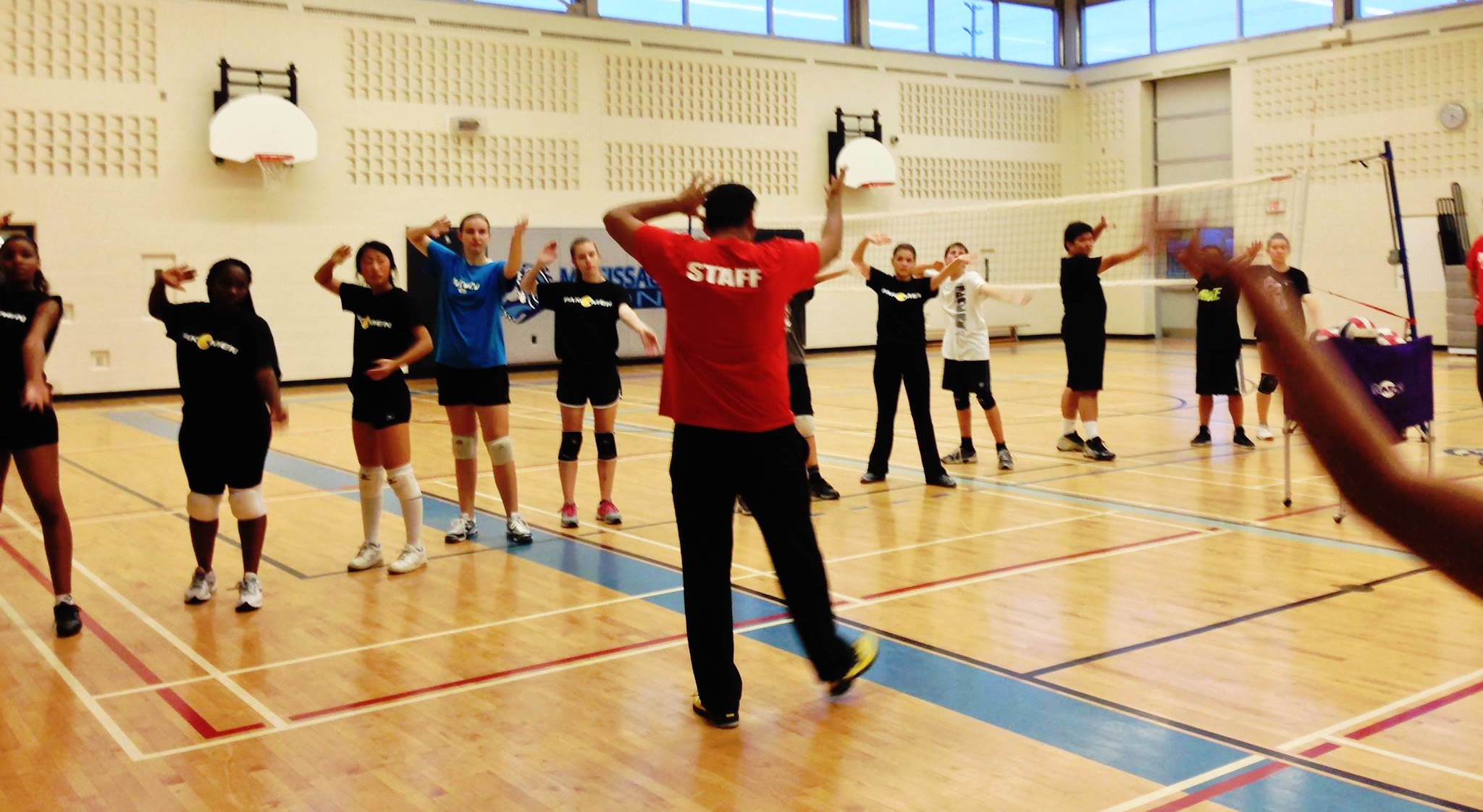Volleyball Serving Rules

It’s hard to imagine the sport of volleyball without serving. Keep in mind that the game of volleyball always begins with serving. Actually, serve is the first hit during the game of volleyball. It’s no surprise that every volleyball team has a server. A server is a volleyball player who is responsible for serving during the game.
The big question is – what does it take to become a successful server? If you would like to become a good server then you obviously need to master the serving skills all the time. You should know that there are different types of serves in volleyball including float serve, jump serve as well as topspin serve. And of course, it makes a lot of sense for you to practise each type of serves. By doing this, you’ll be able to find out your own serving style over time. Remember, serving is something that needs to be practiced by a server on a regular basis. Above all, it’s incredibly important for a server to get familiar with volleyball serving rules.
As you can see, this blog post concentrates on volleyball serving rules. We’ll give you more details on each aspect of serving in volleyball such as first service in a set, service order, authorization of the service, execution of the service and screening during the execution of service. In addition, we’ll tell you about different types of serving faults which should be avoided by volleyball players during the service. As a result, you’ll be able to get an understanding of how to execute a serve the right way.
What is Serve in Volleyball?
First and foremost, you need to know what serve means for volleyball players. Now, it’s time for you to get familiar with definition and meaning of serve in volleyball sport. When it comes to the game of volleyball, it all begins with serving. In fact, serving is all about putting the ball into play. The serve is executed by a volleyball player who plays in the back right zone of the court. It’s also important to know that the serve is executed from the service zone of the volleyball court. In addition, volleyball players must follow the service order that has been recorded on the line-up sheet.
The 1-st Service in a Set
Now, it’s time to figure out how the 1-st service of the 1-st set is determined. The volleyball serving rules state that the 1-st service of the 1-st set as well as the 1-st service of the deciding 5th set is determined by a toss. It’s worth noting that a toss is carried out by the 1-st referee before a volleyball match. Two captains also represent their teams during a toss. The job of the 1-st referee is to determine which team will carry out the 1-st service of the 1-st set and start the game. If a necessity to play the 5-th deciding set arises a toss has to be carried out once again. In this case, a toss is carried out before the 5-th deciding set. The winner of a toss can either select side of the court for his/her team or get the right to serve (or receive the serve) in the 1-st set.
Service Order Rules
Let’s assume that a toss has been carried out and a team that will carry out the 1-st service in the 1-st set has been determined. Now, it’s time to determine the service order for other sets of the game. According to the volleyball serving rules, if a team didn’t carry out the 1-st service of the previous set then this team will serve first in the next set. Now, let’s assume that the 1-st service in a set has been carried out and the serving team has won the rally. In this case, the serving team will also have the right to serve in the next set. The serve has to be carried out by the same volleyball player (or his/her substitute). However, if the serving team loses the rally then the receiving team will get the right to serve in the next set. It’s important to point out that the serve has to be carried out by a volleyball player who moves from the front-right position to the backright position.
Service Authorization Rules
It’s important to know that the service is authorized by the 1-st referee. The 1-st referee’s job is to check both volleyball teams prior a serve and make sure that these two volleyball teams are ready to play the game. Then, the 1-st referee authorizes the serve.
Service Execution Rules
Now, let’s talk how serve has to be executed in volleyball. Once the ball is either tossed or released from hands, a server has to hit it and execute a serve. Keep in mind that volleyball players are not allowed to toss or release the ball more than once. It’s also not allowed for a server to drib the ball and move the ball in the hands. It’s not permitted for a server to touch the court when the service hit is carried out. Plus, a service hit has to be carried out by a volleyball team at the right time. The service execution rule states that a server has to carry out a service hit within 8 seconds after the 1st referee’s whistle. If a service is carried out before 1st referee’s whistle or too late after 1st referee’s whistle then such a service will be cancelled. As a result, a serving team will need to repeat a service.
Screening During Execution of the Service
First of all, we would like to explain to you what is screening in the sport of volleyball. Actually, screening may involve standing grouped, jumping and waving arms when service is executed. By doing so, the serving team’s volleyball players can hide the server as well as the flight path of the ball. And of course, this type of actions is not allowed during the game. The serving team’s volleyball players are not permitted to prevent the opposing team from seeing the server as well as flight path of the ball. That means that any type of individual or collective screening should be avoided during the execution of the service. Once the ball reaches the vertical plane of the net the serving team’s volleyball players can take any position on the court.
Serving Faults in Volleyball
It’s crucial for you to know that a volleyball team can commit different types of serving faults during the execution of the service. Committing any type of serving faults can result in a change of service. In other words, a serving team loses the right to serve and a receiving team receives the right to serve. Below, we’ll explain to you how a volleyball team can commit a fault when a serve is executed.
A serving team commits a fault during the execution of the service if the service order is violated by a server or the service is executed in a wrong way. On the other hand, a serving team can commit a fault even if service has been executed properly. The reality is that the ball can touch one of the serving team’s players, fail to cross the vertical plane of the net, go out or pass over screen after a serving hit has been carried out. If these kinds of things happen that means that a serving team has committed a serving fault. As a result, a receiving team gets the right to serve.
Thank you so much for reading our article. We have just told you everything that you need to know about serving in volleyball. Spend some time to study volleyball serving rules carefully and also repeat them from time to time. Practise your serving skills regularly and work hard. All of your efforts will be crowned with success in the end. Sooner or later, you’ll be able to become a successful server! We wish you the best of luck!
Read about PAKMEN’s High Performance Volleyball programs |
Read about PAKMEN’s Recreational programs |
